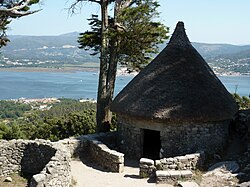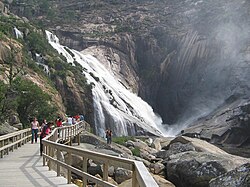This article should specify the language of its non-English content using {{ lang }} or {{ langx }}, {{ transliteration }} for transliterated languages, and {{ IPA }} for phonetic transcriptions, with an appropriate ISO 639 code. Wikipedia's multilingual support templates may also be used.(May 2019) |

The Celtic toponymy of Galicia is the whole of the ancient or modern place, river, or mountain names which were originated inside a Celtic language, and thus have Celtic etymology, and which are or were located inside the limits of modern Galicia.





